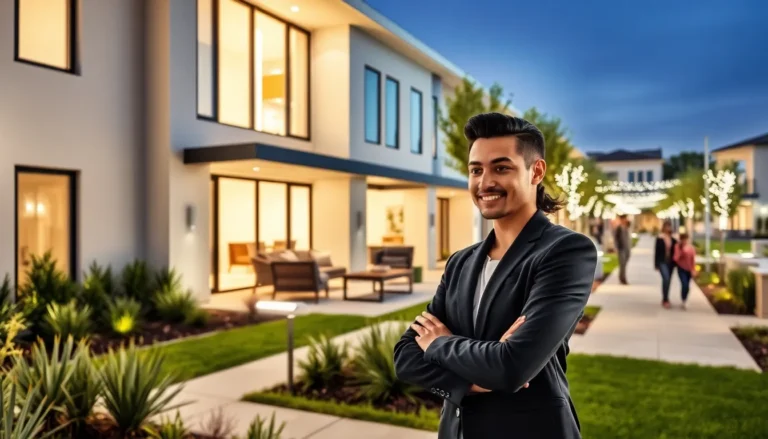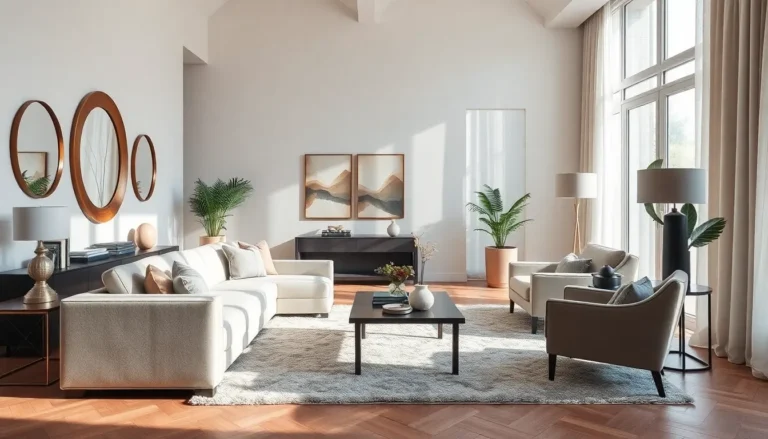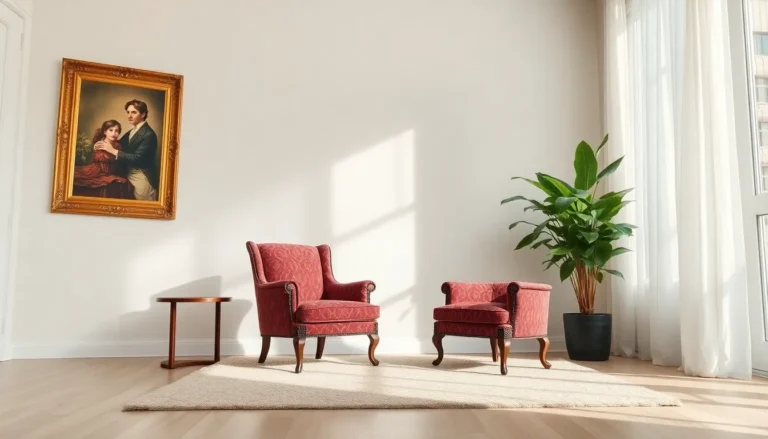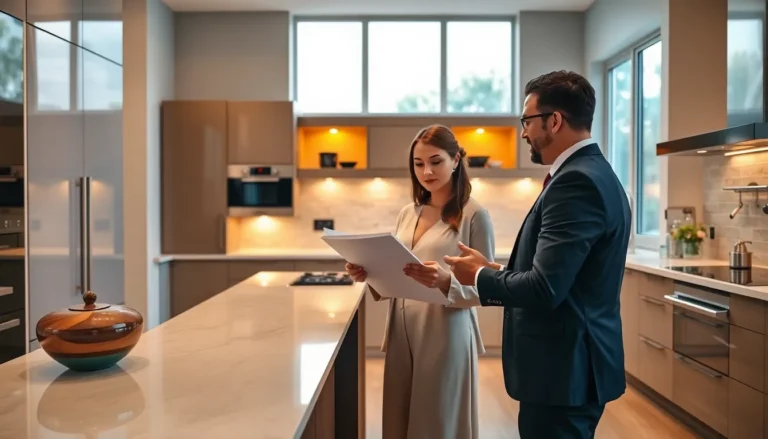Imagine stepping into a world where buildings don’t just touch the sky but tell a story, reflect culture, and embrace sustainability, all while being jaw-droppingly beautiful. Architectural design is much more than blueprints and bricks: it’s a blend of creativity, technology, and an understanding of space that makes walking through a city feel like an adventure. Whether one is a homeowner, a budding architect, or just an enthusiast, diving into architectural design concepts reveals how much they influence the world around us. Buckle up as we explore what makes architectural design truly compelling.
Table of Contents
ToggleUnderstanding Architectural Design

At its core, architectural design is the art and science of creating structures that are not only functional but also aesthetically pleasing. This process goes beyond simple construction. It requires knowledge of various disciplines, including engineering, urban planning, and landscape design. Architects bring together these aspects to create spaces that enhance the quality of life for their inhabitants.
One could argue the essence of architectural design is its ability to evoke emotion. A well-designed building can make people feel safe, inspired, or even invigorated. Achieving this often involves balancing form and function, where the soul of a structure is as important as its utility. Conceptual sketches evolve into intricate plans, and before anyone knows it, dreams of a space find themselves actualized in concrete.
Key Elements of Architectural Design
When it comes to architectural design, certain key elements consistently play a crucial role. These include:
- Space: Understanding how the dimensions and arrangement of spaces affect the experience of the users. Each area should serve a specific purpose while flowing seamlessly into the next.
- Form: This refers to the mass, shape, and configuration of a building. Form needs to harmonize with function: a beautiful exterior can be undermined by a poorly planned interior layout.
- Materials: Each building tells a story through its materials. The choice of materials impacts both the exterior look and the interior feel, influencing durability and sustainability.
- Light: Natural or artificial, light enhances a space’s mood and usability. Architects carefully consider window placements and artificial lighting to create inviting environments.
- Color: Color can affect perception and emotional responses. A thoughtful color palette can bring a space to life or create a relaxing haven, guiding the experience of those who enter.
Popular Architectural Design Styles
Architectural styles evolve over time, influenced by culture, technology, and societal needs. Some popular styles include:
- Modern: Characterized by minimalism, open spaces, and the use of innovative materials. It favors function over form, often showcasing structural elements.
- Classical: This style emphasizes symmetry, proportion, and grandeur. Influenced by ancient Roman and Greek architecture, it often features intricate detailing and monumental structures.
- Gothic: Known for its grandeur and height, Gothic architecture features elements like pointed arches and ribbed vaults, aiming to create awe.
- Industrial: The raw, unfinished look defines industrial design, using steel, wood, and concrete often seen in repurposed warehouses.
- Sustainable: Emerging in recent years, this style focuses on environmentally friendly materials and designs, aiming to minimize energy usage and ecological impact.
The Role of Sustainability in Architecture
As the world grapples with environmental challenges, sustainability has become a pillar of architectural design. Architects now prioritize this aspect, striving to create energy-efficient, eco-friendly buildings. Key sustainable practices include:
- Passive Design: This method harnesses natural elements, such as sunlight and wind, to reduce energy consumption. Well-placed windows and thermal mass can significantly enhance comfort.
- Renewable Materials: Using bamboo, reclaimed wood, and recycled steel minimizes resource depletion and promotes sustainability.
- Green Roofs: Integrating vegetation into building designs, these roofs not only improve insulation but also promote biodiversity and reduce urban heat.
- Water Efficiency: Systems that conserve water, like rainwater harvesting and water-efficient fixtures, are becoming standard.
By prioritizing sustainability, architecture moves towards a more responsible and conscientious future.
Technological Innovations in Architectural Design
Technology is transforming the architectural landscape at an exhilarating pace. Innovations like Building Information Modeling (BIM) allow architects to create intricate designs and streamline project management. Virtual reality is another breakthrough, enabling clients to immerse themselves in their future spaces before construction begins.
Also, advancements in 3D printing are pushing the boundaries of what architects can conceive. With this technology, the possibilities seem endless, complex geometric shapes that were once deemed impossible can now be crafted with precision.
Also, smart building technologies are on the rise. Integrating IoT devices allows inhabitants to control various systems efficiently, creating a seamless blend of utility and comfort.
Cultural Influences on Architectural Design
Architectural design is often a reflection of the cultural context it inhabits. Every region brings forth unique influences, history, climate, and social norms shape the architecture of the area. For instance, traditional Japanese architecture emphasizes harmony with nature, featuring wooden structures, sliding doors, and zen gardens. In contrast, Mediterranean design focuses on light colors and open spaces to cater to warm climates.
As globalization increases, there is a fascinating exchange of architectural ideas. Contemporary skyscrapers might integrate local cultural motifs while utilizing cutting-edge technology. Architects today face the challenge of creating spaces that resonate with local identity while accommodating modern needs.








